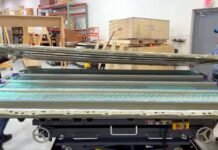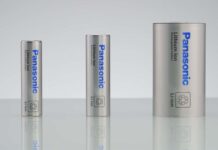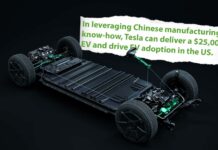[ad_1]
Stellantis and LG Chem‘s LG Energy Solution announced a memorandum of understanding to form a joint venture to produce battery cells and modules in North America.
The plan is to build a new battery plant with an annual output of 40 GWh and start production in the first quarter of 2024.
The groundbreaking for the facility is expected to take place in the second quarter of 2022, but at the moment the location of the new facility is under review and will be announced later.
It’s important to note that Stellantis intends to use this new plant to supply battery cells and modules for its plug-in hybrid and all-electric vehicles produced at several plants in the U.S., Canada and Mexico. We guess that the location will be in the U.S., close to the plants that will be focused on EVs the most.
According to the Stellantis EV Day 2021 presentation in July, the group would like to achieve an electrification rate (xEVs) in the U.S. of more than 40% of its sales by 2030. In Europe, it will be at over 70% by 2030, according to the plan.
“The parties intend that the joint venture will establish a new battery manufacturing facility that will help power Stellantis’ goal of realizing more than 40% of its sales in the U.S. comprised of electrified vehicles by 2030. Targeted to start by the first quarter of 2024, the plant aims to have an annual production capacity of 40 gigawatt hours.
The batteries produced at the new facility will be supplied to Stellantis assembly plants throughout the US, Canada, and Mexico for installation in next-generation electric vehicles ranging from plug-in hybrids to full battery electric vehicles that will be sold under the Stellantis family of brands.”
LG Energy Solution is not a new supplier to Stellantis, as LG Chem supplied the first batteries to the Chrysler Pacifica Hybrid way back in 2014.
“The partnership between the two companies in electrified vehicles dates back to 2014 when LG Energy Solution (then LG Chem) was selected by Stellantis (then Fiat Chrysler Automobiles) to supply the lithium-ion battery pack system and controls for the Chrysler Pacifica Hybrid, the industry’s first electrified minivan.”
Stellantis’ plan includes at least five battery gigafactories to secure supply of more than 130 GWh annually by 2025 and more than 260 GWh annually by 2030.
A few sites were already announced:
- Automotive Cells Company (ACC) battery joint venture (between Stellantis/PSA, Total and recently Mercedes-Benz) – two plants (one in Germany and one in France) with a total output of 48 GWh. By 2030 the production should increase to 120 GWh annually.
- a third battery gigafactory to be built in Italy
- a 40 GWh joint venture with LG Chem’s LG Energy Solution in North America would be the fourth project
The general plan is to use also batteries from external suppliers (data from the Stellantis EV Day 2021):
- 2025: 3 gigafactories (130+ GWh)
EU: 80+ GWh, U.S. 50+ GWh
Europe: Automotive Cells Company (ACC) JV with Total/Saft
contracts with CATL, BYD, SVOLT, Samsung SDI, LG Chem’s LG Energy Solution
U.S. gigafactory partner: undisclosed yet - 2030: 5+ gigafactories (260+ GWh)
EU: 170+ GWh, U.S. 90+ GWh

Carlos Tavares, CEO of Stellantis said:
“Today’s announcement is further proof that we are deploying our aggressive electrification road map and are following through on the commitments we made during our EV Day event in July. With this, we have now determined the next ‘gigafactory’ coming to the Stellantis portfolio to help us achieve a total minimum of 260 gigawatt hours of capacity by 2030. I want to warmly thank each person involved in this strategic project. Together, we will lead the industry with benchmark efficiencies and deliver electrified vehicles that ignite passion.”
Jong-hyun Kim, President and CEO of LG Energy Solution said:
“Establishing a joint venture with Stellantis will be a monumental milestone in our long-standing partnership. LGES will position itself as a provider of battery solutions to our prospective customers in the region by utilizing our collective, unique technical skills and mass-producing capabilities.”
[ad_2]
Source link











